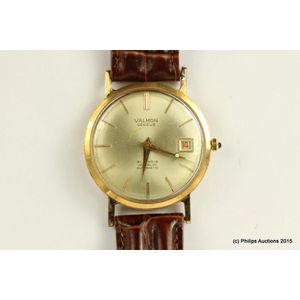Thomas Mercer Survey Chronometer with Audible Signal
You must be a subscriber, and be logged in to view price and dealer details.
Subscribe Now to view actual auction price for this item
When you subscribe, you have the option of setting the currency in which to display prices to $Au, $US, $NZ or Stg.
- Fusee - The fusee movement was used in clocks and pocket watches from the mid 17th century. The fusee is a cone shaped drum within the works that is linked to the barrel of the spring, usually by a length of chain.
As the mainspring loses its tension over time, the cone shaped barrel compensates for this by increasing the tension, by pulling the mainspring tighter, thus ensuring the time remains constant.
Use of the fusee in clocks was superseded by the "going barrel" in the mid 19th century and for pocket watches at the beginning of the 19th century.
The fusee continued to be used in marine chronometers until the 1970s. - Bezel - On a clock or watch, the bezel is the metal frame into which the watch or clock glass is fitted. In clocks, the bezel may include a hinge and a flange, in effect a door to the face of the clock. In jewellery the bezel is a band of metal with a projecting lip that holds the gemstone in its setting.
- Movement - The technical name for the workings of a clock or watch, and does not include the dial or case.
This item has been included into following indexes:
Visually similar items

A gold gents Valmon wristwatch. 18ct yellow gold, marked to dial Valmon Geneve 21 jewel Incabloc automatic, circa 1970's, with round case, flared lugs, silvered dial, baton markers, the hands and date at 3 o'clock, fitted with a brown leather strap

A Chinese 'Staner' automatic calendar wristwatch, centre seconds with four sub dials, showing day, date, month, moonphase with case and box. Diameter 39 mm.

Breitling. A stainless steel and gold automatic chronograph wristwatch with registers and date ref B13050 no 94 circa 1990, automatic winding movement, fully jewelled, silvered dial, applied gilt baton hour markers, black outer 1/5th second divisions, rais

A brass cased pocket sextant by A. Hobbs, the cylindrical case unscrewing to form the body of the sextant, complete with instructions engraved to the inside and with silvered Vernier scale. Diameter 8 cm
